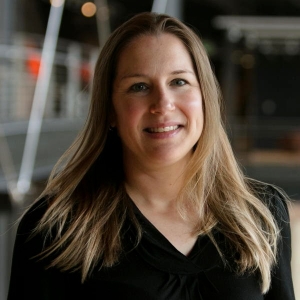As a computer graphics animator at Pixar, Emilie Goulet has worked on some of the most beloved animated films of our time including Lightyear, Luca, Soul, Toy Story 4, Incredibles 2 and Coco.
After studying fine arts, Goulet launched her career in animation as a layout artist at Cinar and CinéGroupe while still attending Concordia’s Mel Hoppenheim School of Cinema. She then took an eight-year detour from film to work in Montreal’s vibrant video game industry before returning to her first love.
With a move to Hollywood, she started at Reel FX followed by Walt Disney Animation Studios and Sony Pictures Imageworks. Since landing at Pixar in 2016, Goulet has played a key role in a host of blockbusters that have received critical acclaim and has gone on to animate a number of prize-winning films including Soul, the 2021 Academy Award winner for Best Animated Feature.
Celebrating diversity
“I’m proud to have worked on many Pixar films that embrace diversity. Coco is such a special film that celebrates Mexican culture and it was the first movie I worked on at Pixar. While making Soul, we immersed ourselves in jazz, an important part of African American history. There’s also a moment in Toy Story 4 where I animated Bo Peep, a female character, in a very empowering scene when she’s doubting herself, and then makes a decision to go for it.”
Taking a risk
“Applying to film animation at Concordia was a big leap of faith for me because it was the moment in my life I chose to pursue my dream career.”
The Concordia factor
“Attending Concordia was like finding my tribe, which is similar to how I felt when I started at Pixar. Being in a community of artists and meeting people who made animated films was eye-opening because I felt validated about what I wanted to do with my life.”
Current passion project
“Right now, I’m writing and learning how to connect stories with characters, because they’re so intertwined.”


